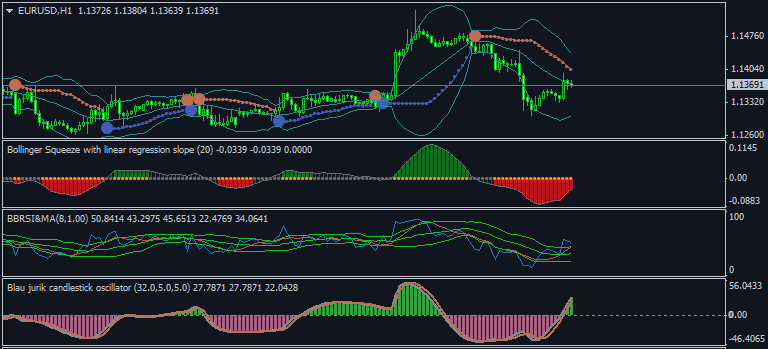Bollinger bands are very similar to moving averages. The bands are plotted at two standard deviations above or below the moving average. This is typically based off of the simple moving average, but an exponential moving average can be used to increase the sensitivity of the indicator. A 20-day simple moving average is recommended for the center band and 2 standard deviations for the outer bands. The length of the moving average and number of deviations can be altered to better suit trader preferences and volatility of a currency pair. In addition to identifying relative price levels and volatility, bollinger bands can be combined with price action and other indicators to generate signals and be a precursor to significant moves.

How can Bollinger Bands be Used for Trading?
Bollinger bands are typically used by traders to detect extreme unsustainable price moves, capture changes in trend, identify support/resistance levels and spot contractions/expansions in volatility. There are a number of ways to interpret Bollinger Bands.
Breakouts
Some traders believe that when the prices break above or below the upper or lower band, it is an indication that a breakout is occurring. These traders will then take a position in the direction of the breakout.
Overbought/Oversold Indicators
Alternatively, some traders use Bollinger Bands as an overbought and oversold indicator. As shown in the chart below, when the price touches the top of the band, traders will sell, assuming that the currency pair is overbought and will want to revert back to mean or the middle moving average band. If the price touches the bottom of the band, traders will buy the currency pair, assuming that it is oversold and will rally back towards the top of the band. The spacing or width of the band is dependent on the volatility of the prices. Typically, the higher the volatility, the wider the band and the lower the volatility, the narrower the band.



